Marion Mahony Griffin: No Apology in the World of Men
The name Marion Mahony Griffin (1871–1961) may not ring any immediate bells for you, but she was responsible for creating the unique look and feel...
Joanna Kaszubowska 15 April 2024
Thérèse Schwartze (1851–1918) grew up in an artistic family in Amsterdam. Her father Johann Georg Schwartze was a painter and he introduced his daughter to the profession. Read the story of this remarkable female artist who became the favorite painter of the Dutch royal family.
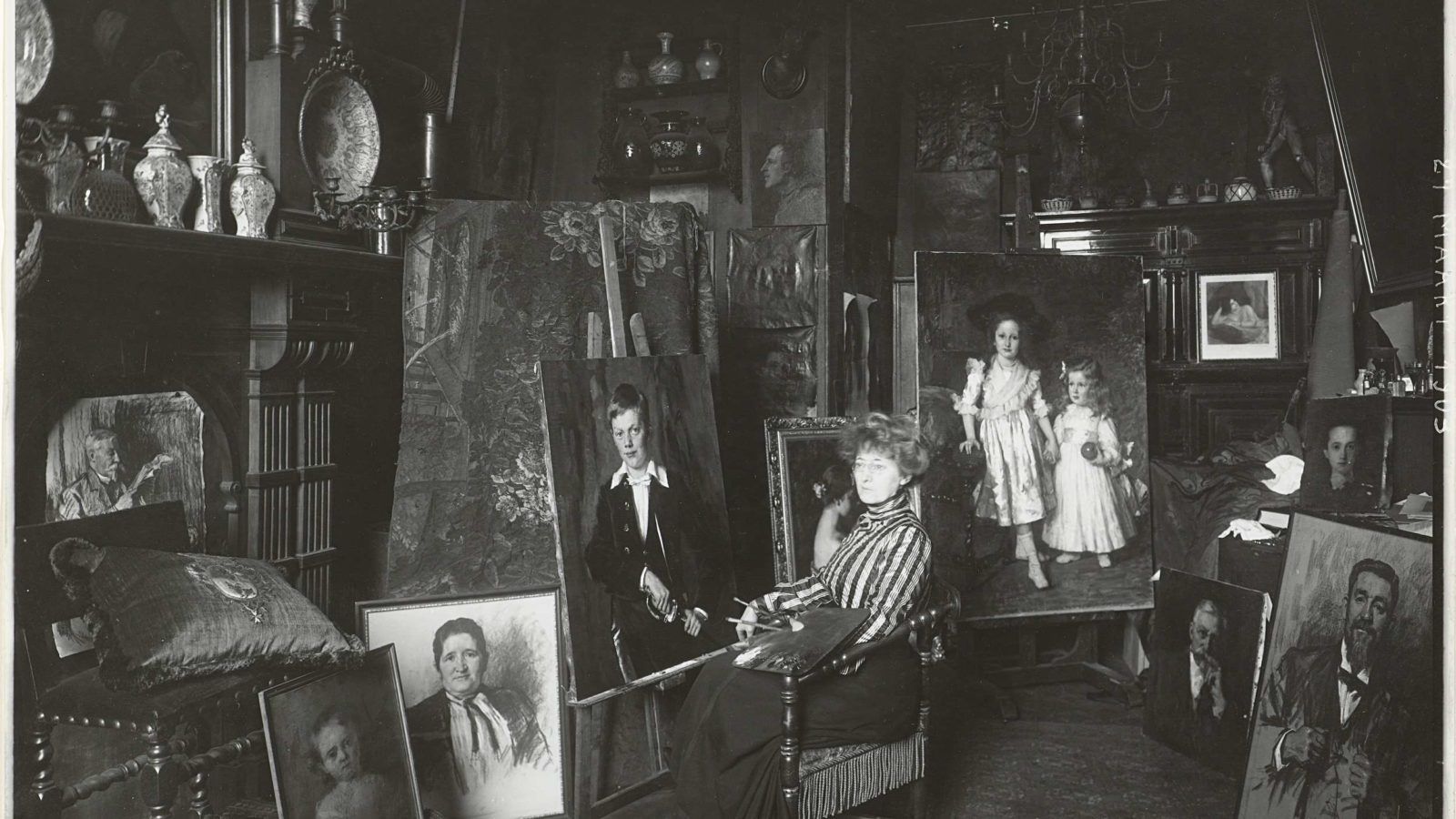
At that time, painting training for girls was seen as a part of a cultured upbringing rather than a profession: earning money was the job of the man. But the ambitious father didn’t care about the conventions. He trained his daughter in painting and drawing from a very young age and wanted Thérèse to become his successor. She started her professional career at the age of 16, working in the studio of her father which she took over after his death in 1874.
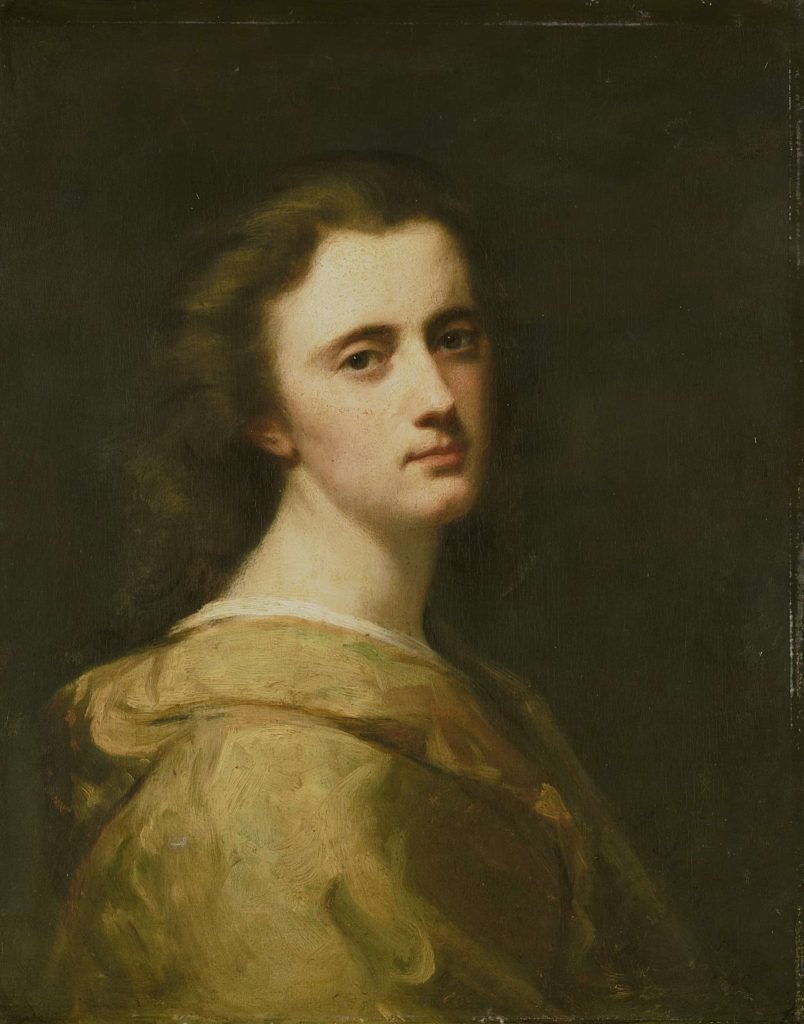


Thérèse Schwartze spent a period of time studying in Munich and then in Paris. The artistic life of Paris inspired her, especially the artworks by the portrait painter Jean Jaques Henner, admitted for his use of sfumato and chiaroscuro.
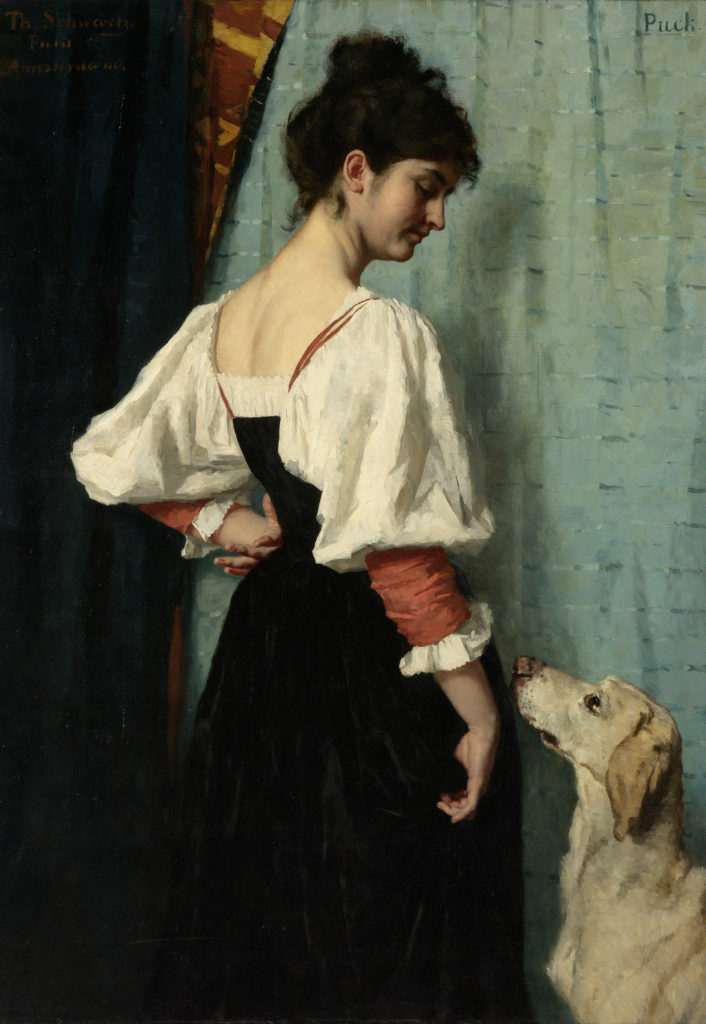


In this painting, created in Schwartze’s atelier in Paris, the young woman, wearing an Italian costume, exchanges a glance with Puck, the dog at her right. The women’s expression is mesmerizing while various rich fabrics of her dress are masterfully rendered. Schwartze’s talent and skills became widely appreciated and she received an increasing number of important and wealthy clients.
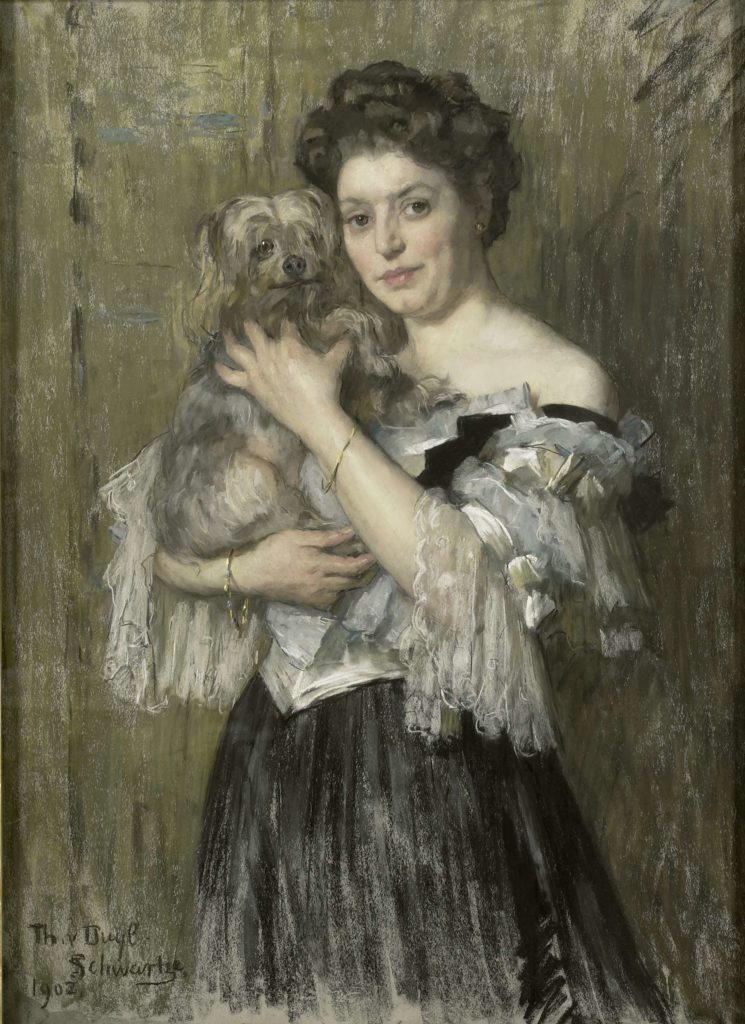


Thérèse Schwartze became the favorite painter of the Dutch royal family. The portrait of Queen Emma with the little princess Wilhelmina in her arms was the first assignment that she received from the royal court. It was meant for the king’s birthday on February 19, 1881.
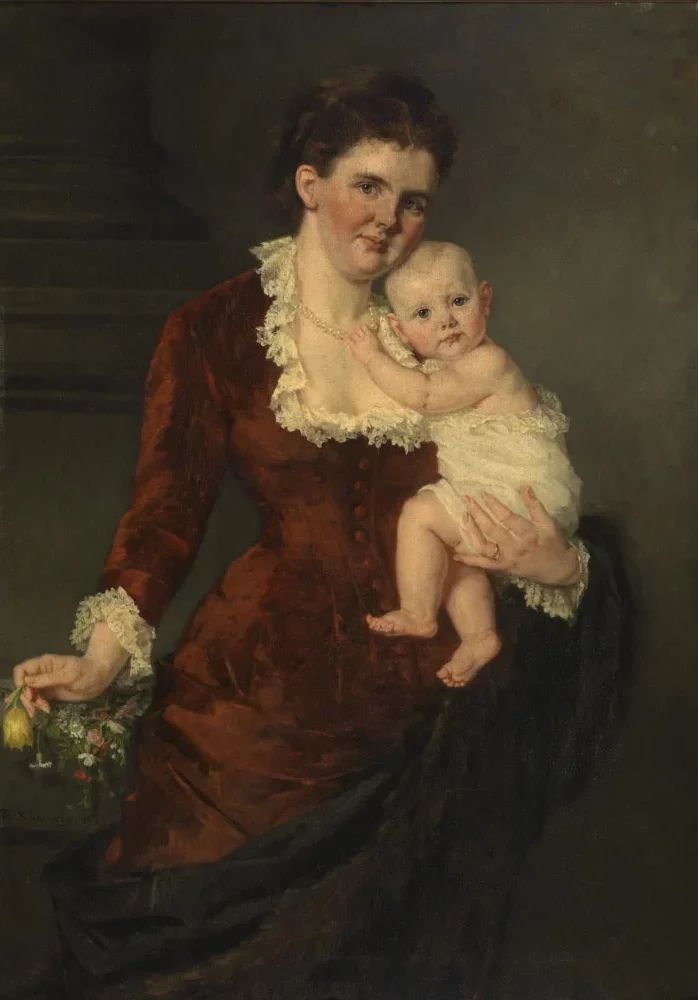
All the qualities that made Schwartze’s work popular and valued are visible in this portrait: commendable, though slightly generous, likeness, an engaging composition, and a beautiful color palette. In the following 40 years, Schwartze received many more assignments from the royal family. Especially queen Wilhelmina, an artist herself, appreciated Schwartze’s style, talent, and also the fact that she was a woman.
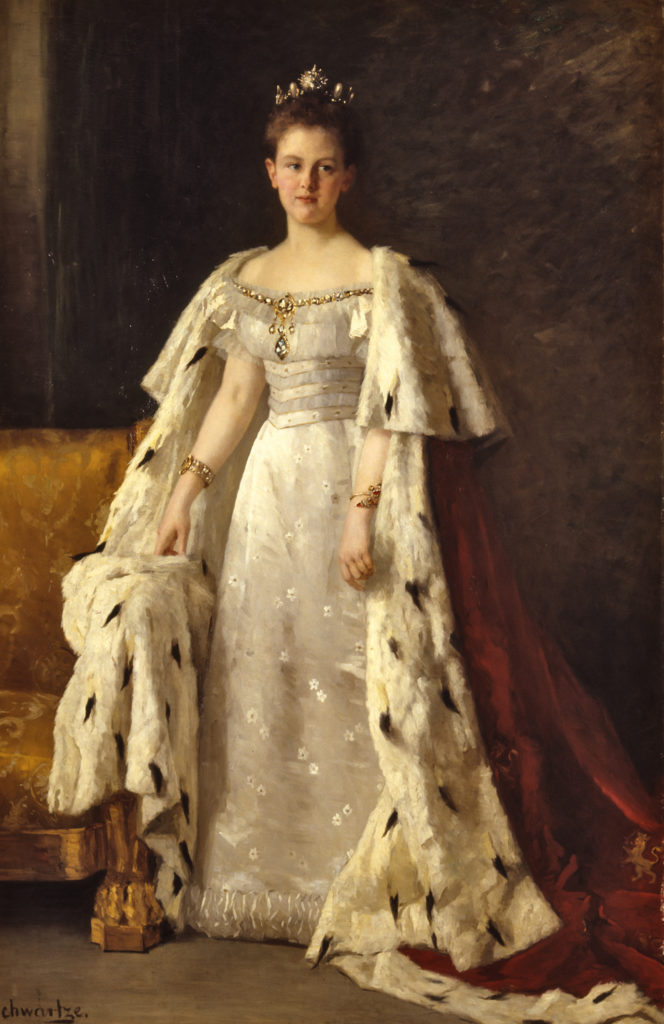


This inaugural portrait was commissioned by Queen Emma in 1897, prior to the inauguration of Queen Wilhelmina. The young queen wears a gown with woven daisies, symbolizing innocence. The decoration on the dress is simple, so the focus shifts to the jewelry: the sparkling diadem and a diamond cord on the décolleté. Thérèse Schwartze was allowed to exhibit the painting at the National Exhibition of Women’s Work, which was held in The Hague in July, August, and September 1898.
In 1896, Thérèse Schwartze became the first woman to receive the Order of Orange-Nassau, recognizing those who earned special merits for society. In the following years, she exhibited a lot, received multiple awards, and was a member of many artists’ associations and committees. One of them was Amsterdamse Joffers, women painters who met weekly to paint and show and discuss their works together. The meetings took place in Thérèse Schwartze’s house and she was a star of the group. Lizzy Ansingh, the artist’s niece and student, was a member as well.
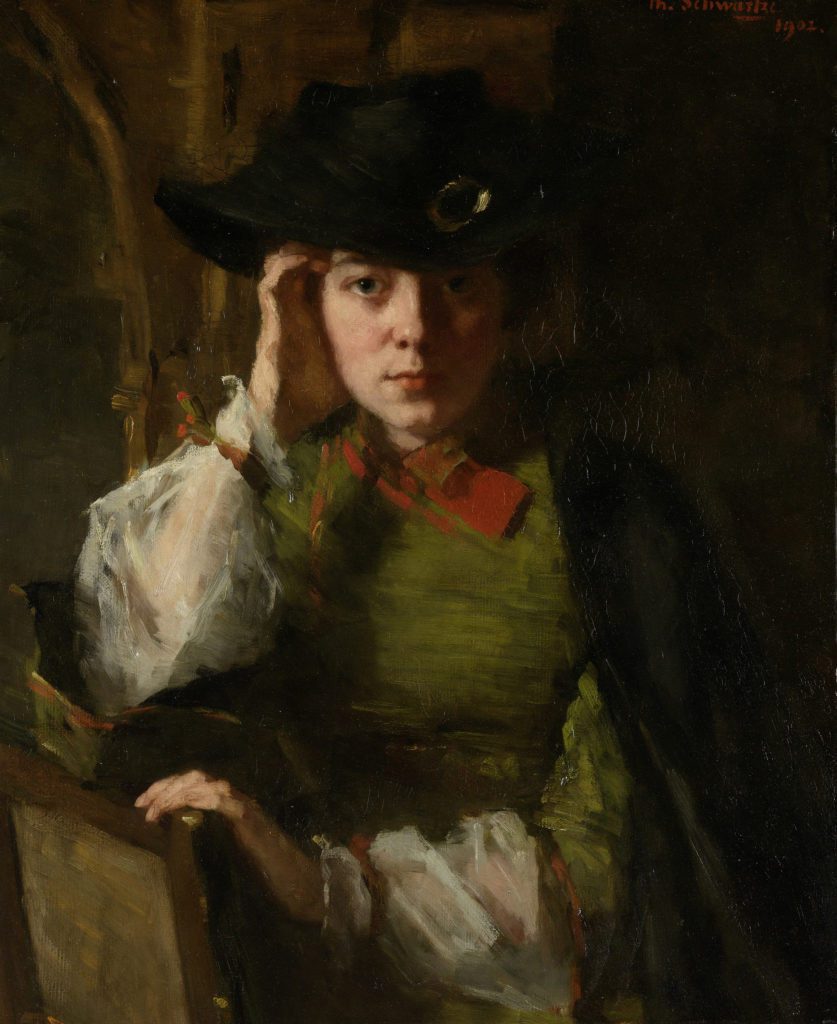


It was Lizzy who has done everything she could to honor her aunt’s name and art after Schwartze’s death in 1918. She initiated an idea for a commemoration exhibition at the Stedelijk Museum in Amsterdam in 1919, made sure a street in Amsterdam was named after Thérèse Schwartze and she founded the Thérèse Schwartze Foundation, commemorating the painter, supporting Dutch visual artists and preserving the Dutch portrait art.
This article was provided by Europeana, Europe’s platform for cultural heritage. To learn more about remarkable European women in the arts, sciences, and society, visit the online exhibition Pioneers.
DailyArt Magazine needs your support. Every contribution, however big or small, is very valuable for our future. Thanks to it, we will be able to sustain and grow the Magazine. Thank you for your help!